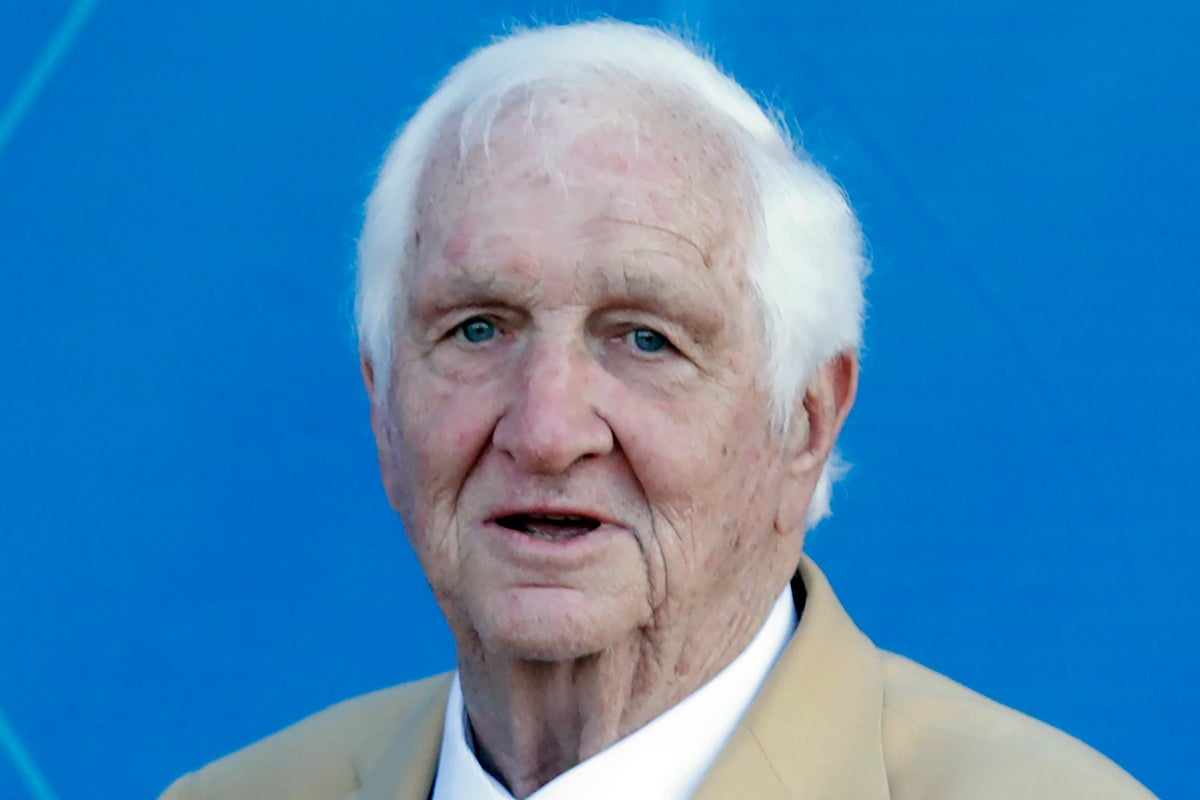
Gil Brandt, overshadowed by coach Tom Landry and general manager Tex Schramm as part of the trio that built the Dallas Cowboys into “America’s Team” in the 1970s, has died. He was 91.
The Pro Football Hall of Fame said Brandt died Thursday morning. No cause of death was given, but Brandt had been in declining health in recent years.
Brandt was the player personnel director alongside the stoic, fedora-wearing Landry and media-savvy Schramm, but had to wait almost 30 years longer to get into the Hall of Fame.
By the time Brandt was enshrined as a contributor, it was as much for his ability to remain involved in the NFL by adapting to the social media age as for the innovation the Cowboys brought to the draft process with computers in the early 1960s.
“You can’t tell the story about the success of the Dallas Cowboys and their two-decade run of winning seasons from the mid-1960s to mid-1980s without mentioning Gil Brandt,” Hall of Fame president Jim Porter said.
“To me,” said former Dallas running back Calvin Hill, a first-round pick in 1969, “Gil should have been the first one in terms of certainly from a personnel standpoint.”
In 2019, Brandt finally joined Landry (1990) and Schramm (1991) in Canton, Ohio, and always said he never felt overshadowed.
“I think we all got credit,” Brandt told The Associated Press before his induction. “And I think Tex rightfully so got more credit than Tom and myself. Because he was really a very media-savvy person. When somebody from Sports Illustrated called, they didn’t talk to Tom, they didn’t talk to me. They talked to Tex.”
Schramm, Landry and Brandt were together for the franchise’s first 29 seasons, and Brandt was the last of the three to go after Jerry Jones bought the team in 1989 and immediately fired Landry. Schramm resigned shortly thereafter (Jones has been the GM for all 34 years he has owned the team).
“How could you not be overshadowed by Tex and Tom?” asked a chuckling Cliff Harris, who credits his Hall of Fame career as a safety to Brandt finding him as an undrafted player out of tiny Ouachita Baptist in Arkansas. “Everybody was.”
Brandt said late Raiders owner Al Davis tried to hire him before the 1989 draft by telling him he had heard Jones was going to fire him after the draft. Brandt didn’t believe it, and though Davis turned out to be right, Brandt said he probably wouldn’t have done it anyway because Dallas had become home for the Wisconsin native.
Animosity toward Jones didn’t last long for Brandt, who maintained a presence around the club even as his health forced him into a wheelchair for game days in the press box. Brandt even asked Jones to be his presenter in Canton.
At Schramm’s urging, Brandt worked with IBM to create a system in which numerical values were assigned to intangibles such as character, competitiveness and “mental alertness,” along with tangible measures such as quickness and strength. The numbers were stored on punch cards and loaded into massive computers, allowing the club to rank players.
Brandt enjoyed telling the story of Vince Lombardi chiding the Cowboys by asking if their computer had broken down while Dallas held up the 1964 draft waiting for medical information on Mel Renfro. The Cowboys drafted the future Hall of Fame defensive back in the second round.
“I think Gil, in terms of quantifying so many things about scouting, was really ahead of his time,” Hill said. “They could look at all the individual things that go into making a player and a teammate and tried to quantify it.”
While the Cowboys developed a Hall of Famer out of a track star in receiver Bob Hayes of Florida A&M, they also found a four-time All-Pro on the basketball court at Utah State in cornerback Cornell Green.
There were plenty of future stars among high draft picks from bigger schools, such as TCU’s Bob Lilly, the first draft choice for the Cowboys in 1961, and Alabama linebacker Lee Roy Jordan, their top selection two years later.
But the list of lower-round picks or undrafted players, particularly from smaller schools, under Brandt stood out as much as anything else. Brandt often mentioned Jethro Pugh, an unsung defensive lineman taken in the 11th round in 1965 out of tiny Elizabeth City State in North Carolina.
Pugh played for the first five Dallas teams to reach the Super Bowl, as did Roger Staubach. The Hall of Fame quarterback was a 10th-round choice a year before Pugh, with the Cowboys taking him while knowing Staubach’s arrival would be delayed five years by a Navy commitment.
Brandt’s longevity also turned him into one of the few unofficial historians for the NFL — a role that served him well when the league celebrated its 100th anniversary the same year he went into the Hall of Fame. He had more than 150,000 followers on Twitter.
“I feel like I have reinvented myself,” Brandt said in 2019. “From somebody that did pretty good with the Cowboys to somebody that’s doing pretty good right now with social media.”







